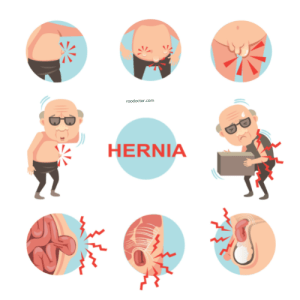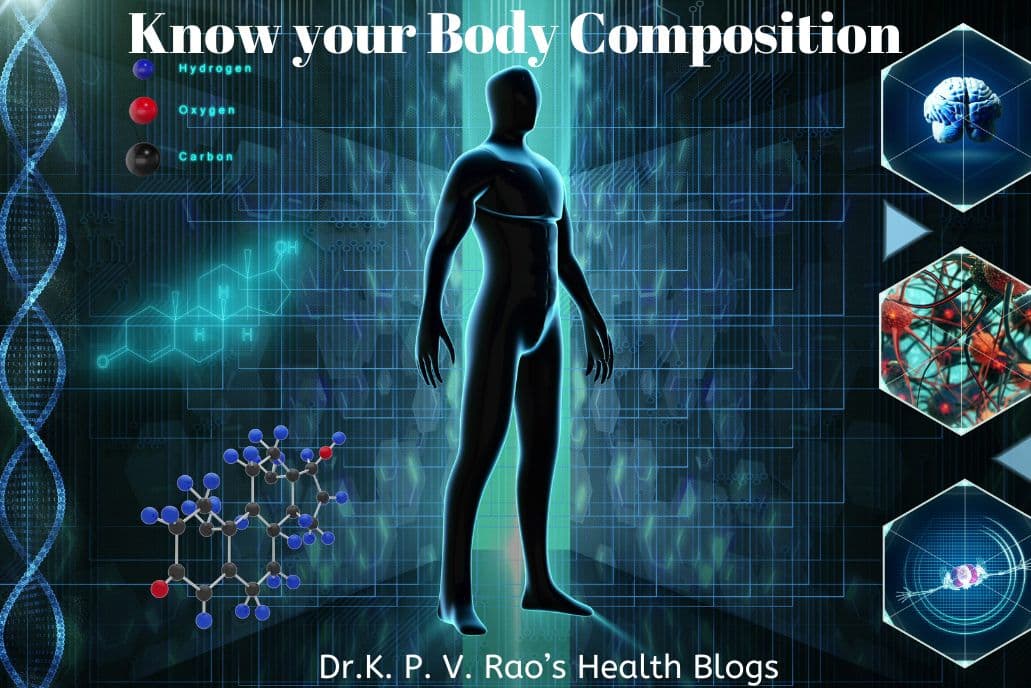Table of Contents
Signs, Symptoms, Treatment and Prevention
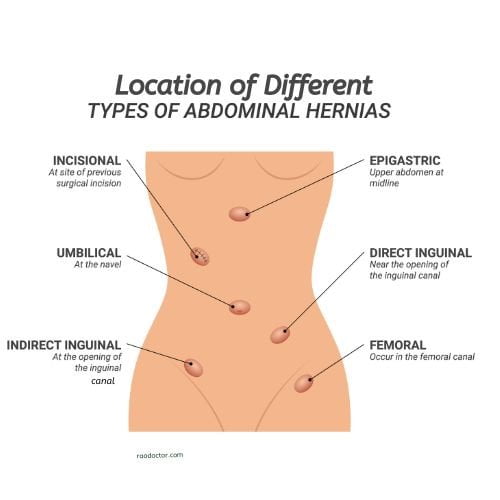
Listen to this article
A hernia is a condition that occurs when an organ or fatty tissue squeezes through a weak spot in the muscle or connective tissue that holds the muscles in place. It can occur in various parts of the body, including the abdomen, groin, and chest.
People of all ages can experience hernias, and they can cause a great deal of pain, discomfort, and even embarrassment. Fortunately, there are treatments and lifestyle changes that can help prevent them.
In all my 38 years of clinical practice, I have seen many patients with varied ailments. Hernias are occasional cases. Last month, December 2022, I happened to see two such cases, both elderly patients, one aged 68 years and the other one eighty-seven. I have included the picture of their hernia below.
Both have been advised operation. One of them got operated on but the second one- the 87 years old, has been held back due to heart issues.
To understand hernias, it’s important to know the signs and symptoms, as well as the treatments and preventative measures available.
This article will provide an overview of hernia signs, symptoms, treatments, and prevention, so you can better understand and manage this condition.
In my last article, I discussed a condition that requires surgery- C A B G. Now, we have here another condition or ailment that requires surgery to get rid of it. Let’s now learn in detail about this condition.
What is a hernia?
As I said in the first sentence, hernia is a condition that occurs when an organ or fatty tissue squeezes through a weak spot in the muscle or connective tissue that holds it in place.
A hernia can occur in various parts of the body, including the abdomen, groin, and chest. The most common hernias include abdominal hernias, groin hernias, umbilical and inguinal [direct and indirect] hernias.
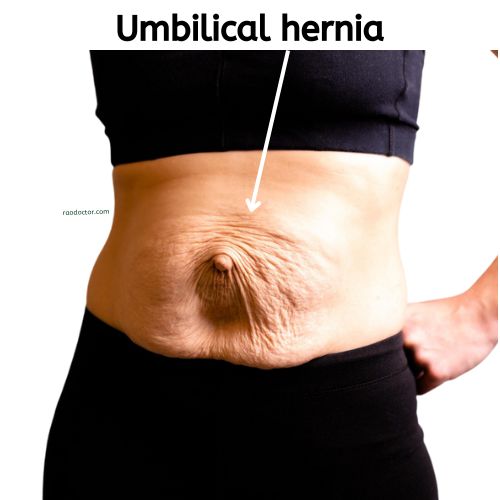
Another such condition that happens when a part of the stomach enters the chest from the abdomen is called Hiatal Hernia.
A hernia may happen when an area of weakness in the abdominal [most of the time] muscle allows intra-abdominal pressure to push an organ through the muscle wall. An untreated hernia can become worse and may cause discomfort or pain.
A hernia may occur when the layers of muscles and connective tissue that surround an area of the body weaken and bulge or push through the surrounding tissues.
It can form in abdominal muscles, the wall of the abdomen, kidneys, or the groin.
Types of hernias
An epigastric hernia occurs when the fatty tissue pushes out of a weak spot in the abdominal wall in between your navel and the breastbone. This type of hernia may cause a bulge under the skin.
- A femoral hernia occurs when the soft tissues in the groin bulge into the thigh.
- An inguinal hernia occurs when the inguinal canal, the pathway for the spermatic cord, swells with fluid or soft tissue. This type of hernia may cause a lump or swelling in the groin. Here are two pictures of two indirect inguinal hernias in two different elderly patients who visited my clinic-

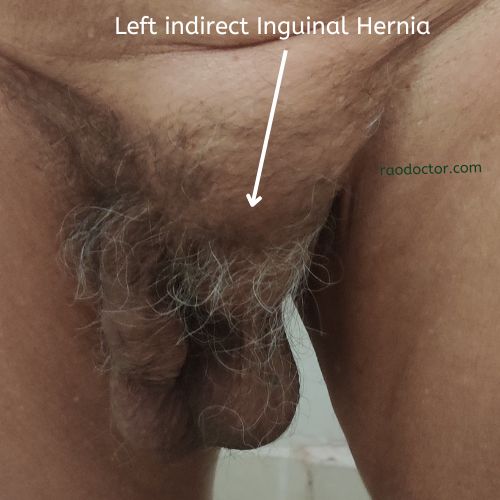
An incisional hernia happens when an opening in the abdominal wall following abdominal surgery gets bigger and a portion of abdominal wall tissue bulges through the incision site [see picture below].

Signs and symptoms of hernias
Abdominal hernias typically cause a bulge or mass in the abdomen that can be painful and worsen when coughing, sneezing, or lifting heavy objects.
Pregnant women sometimes develop umbilical hernia [see the image below]-

Hernias can also cause a sudden bad pain in the abdomen when coughing, laughing, or lifting heavy objects. An inguinal hernia may cause a bulge or mass beneath the skin in the groin area, in the upper part of the thigh [as seen in the two images above].
A femoral hernia is usually painless and may not be visible, but it may cause pain, swelling, and warmth in the groin area.
Inguinal and femoral hernias may cause pain when coughing, laughing, sexual activity, or lifting heavy objects.
Useful resource- Penn Medicine
Diagnosing hernias
The doctor may be able to feel a hernia during a physical exam. A doctor may also be able to see a hernia through the skin with an imaging test, such as an ultrasound or a computed tomography scan (CT scan).
The doctor may recommend surgery if you have other health conditions that increase your risk of complications from surgery. If you have no additional health conditions, surgery might be an option.
Treatments for hernia
Treatment may not be necessary, especially if the hernia is small and doesn’t cause pain or discomfort. But if you experience pain or discomfort, there are a few ways to treat a hernia.
Hernia repair If you have pain or discomfort in addition to a hernia, your doctor may suggest surgery to repair the hernia. Surgery is considered a last resort and is only recommended when the hernia is large enough to cause pain and discomfort.
Hernia Surgery
If you have a hernia that causes pain or discomfort, your doctor might recommend surgery. Hernia surgery can be done in different ways based on the type of hernia.
- Hernia repair surgery can be done as open surgery, laparoscopic surgery, or minimally invasive surgery.
- Open surgery involves an incision in the abdominal wall.
- Laparoscopic surgery uses a small incision while a camera looks inside the abdomen.
Minimally invasive surgery uses a small incision and special instruments to repair the hernia.
How is it done
Surgery to repair a hernia involves making an incision in the abdominal wall, pushing the herniated part back into its original place and placing a mesh [Teflon] to repair the hernia [see the picture below].

During the procedure, the doctor may repair the hernia and close the abdominal wall using sutures or use a synthetic patch to seal the hole.
This can be a delicate procedure, so your doctor may use special instruments, such as laparoscopy or minimally invasive surgery.
You can learn all about how these surgeries are done, in detail, by clicking this link- Hernia Surgery.
Complications from hernias
If the hernia is large enough, it can cause a strangulation of the herniated part or the intestines, as in the case of abdominal hernia [see the images below].
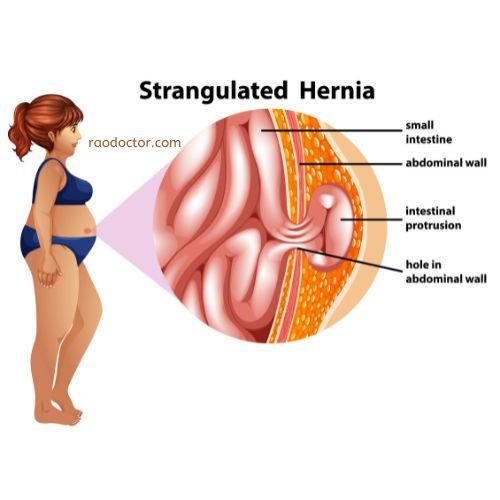

If the hernia is not treated, the strangulated part may become gangrenous and infected.
This infection may spread to the rest of the abdomen and cause an infection in the blood, called sepsis.
A large abdominal hernia can put pressure on nearby nerves and blood vessels.
This can cause pain in the abdomen or groin area, or numbness and tingling in the legs.
Prevention and lifestyle changes for hernias
Certain activities can increase your risk of developing a hernia, including
lifting heavy objects,
smoking, and
straining during bowel movements.
If you perform these activities frequently, you may be at risk of developing a hernia. To help prevent hernias, avoid these risky activities.
Eating a healthy diet, staying hydrated, and getting plenty of rest can help prevent hernias. They can also help prevent gastrointestinal diseases, like irritable bowel syndrome (IBS) and diverticulitis, which can increase the risk of developing abdominal hernias.
Exercise is important for overall health and fitness, but it can also help prevent hernias. Exercising regularly can help strengthen the muscles around the abdomen, which can help prevent hernias.
Summary
A hernia is a condition that occurs when an organ or fatty tissue squeezes through a weak spot in the muscle or connective tissue that holds it in place.
A hernia can occur in various parts of the body, including the abdomen, groin, and chest. The most common hernias include abdominal hernias, groin hernias, and inguinal hernias.
A hernia may occur when the layers of muscles and connective tissue that surround an area of the body weaken and bulge or push through the surrounding tissues. Most of the time, the reason is increased intra-abdominal pressure.
Hernias can also cause a sudden bad pain in the abdomen when coughing, laughing, or lifting heavy objects.
These activities can increase your risk of developing a hernia, including lifting heavy objects, smoking, and straining during bowel movements.
Eating a healthy diet, staying hydrated, and getting plenty of rest can help prevent hernias. Exercising regularly can help prevent hernias as well.
Understanding Hernia: All you wanted to know Share on XFinal Words
If you have found this article useful, do share it with your friends and family through the social media icons at the bottom of this article. Alternately, you can click to Tweet above.
My next article will be on different surgeries for hernias. Do stay tuned in by subscribing to my blogs.
Adios.

